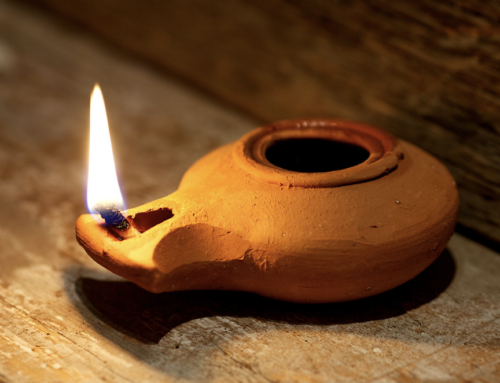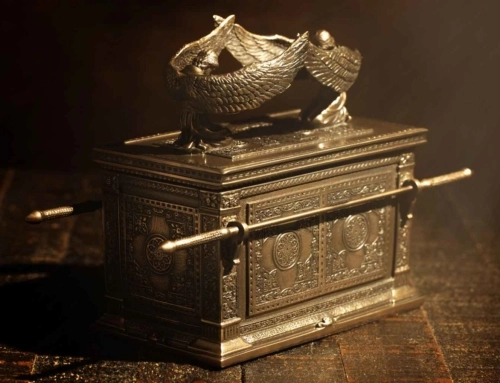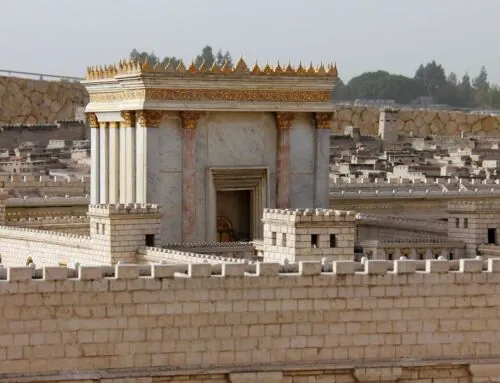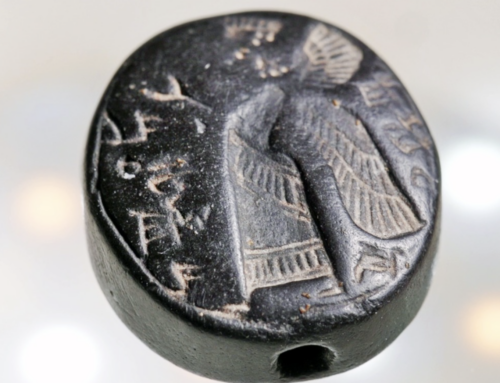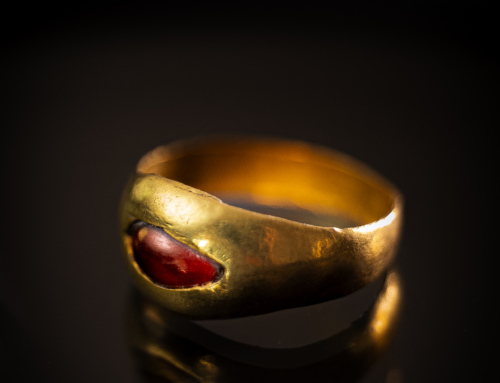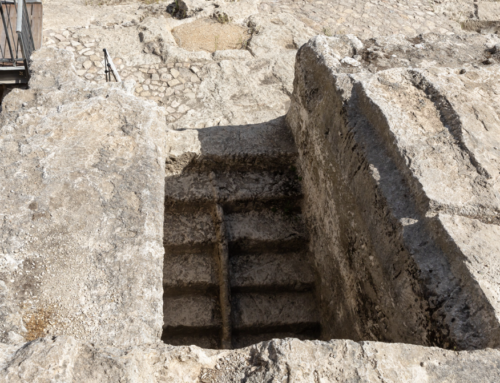While most toddlers are picking up pebbles and toys, 3-year-old Ziv Nitzan stumbled upon something far more extraordinary: a 3,800-year-old Canaanite scarab amulet—an ancient artifact tied to Egyptian and Canaanite culture.
Ziv was on a family hike at Tel Azeka, a historic hill near Beit Shemesh in central Israel, when she bent down and picked up what looked like an ordinary stone. But as her older sister Omer watched Ziv brush the sand away, they realized this was no ordinary find. “Out of all the stones around her, she picked up this one,” Omer said. “When she rubbed it, we saw something was different.” They quickly notified the Israel Antiquities Authority (IAA), and experts confirmed it was a Middle Bronze Age scarab, used both as a seal and amulet. In recognition of her find, the IAA presented Ziv with a certificate of appreciation for her “good citizenship.”
What Is a Scarab?
A scarab is a small, intricately carved object shaped like a dung beetle, a creature deeply symbolic in ancient Egyptian culture. To the Egyptians, the beetle’s habit of rolling dung balls—which seemed to appear out of nowhere—was seen as a symbol of creation, renewal, and rebirth. This made the scarab a powerful religious and protective symbol, associated with the sun god Khepri, who was believed to roll the sun across the sky each day.
How Were Scarabs Made?
Ancient artisans crafted scarabs from materials like steatite (soapstone), faience, ivory, and semi-precious stones. The beetle’s back was carved to resemble a beetle’s body, while the flat underside often bore hieroglyphs, symbols, or images representing names, titles, gods, or protective messages. The carved base was used like a seal—pressed into clay or wax to mark documents, property, or offerings. Scarabs were worn as amulets, buried with the dead, or used in temples and households. Their purpose ranged from warding off evil to affirming one’s identity or status.
Though scarabs originated in Egypt, their influence spread throughout the Levant, including Canaan (ancient Israel and surrounding areas). Canaanite versions often retained Egyptian stylistic features but included local symbols and language. These scarabs are typically found in graves, public buildings, and homes, showing how widespread and culturally significant they were.
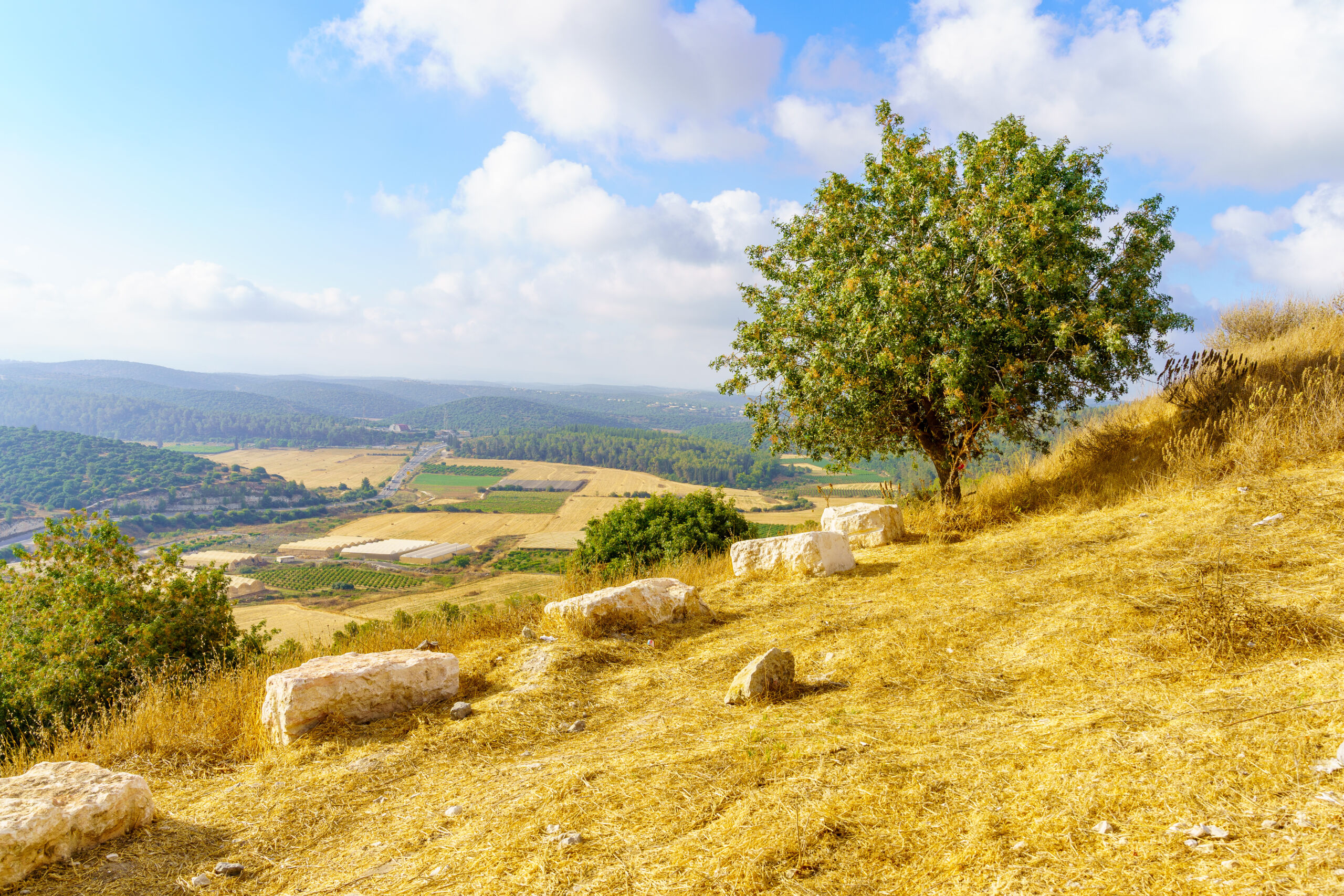
Tel Azeka: A Biblical Landmark with Layers of History
Ziv’s remarkable discovery adds to thelarge amount of history at Tel Azeka, a site not only covered in archaeological value but also deeply rooted in biblical history. Located in the Shephelah, the lowland region between the Judean mountains and the coastal plain, Tel Azeka has long stood as a strategic stronghold. Throughout history, this elevated hill has witnessed countless cultural and military shifts, with layers of ruins revealing traces of ancient city walls, agricultural installations, and structures from the Judahite Kingdom.
But what truly sets Tel Azeka apart is its direct connection to one of the Bible’s most iconic events: the Battle of David and Goliath.
In 1 Samuel 17:1, the Philistines gathered their armies at Socoh, encamping “between Socoh and Azekah, in Ephes-dammim.” It was here, in the Valley of Elah, nestled below Tel Azeka, that the dramatic confrontation took place. Israel’s army camped on one hill, the Philistines on another, with the valley between them. From the heights of Tel Azeka, one could have looked down upon the battlefield where a young shepherd named David, armed with just a sling and unwavering faith in God, defeated the towering warrior Goliath.
This wasn’t just a military encounter—it was a defining moment in Israel’s history, showcasing God’s power working through the unlikely and the humble. Tel Azeka, overlooking the Valley of Elah, becomes more than an archaeological site; it becomes a living witness to divine intervention, a landscape where faith overcame fear, and where a boy’s courage changed the fate of a nation.
The discovery of a Canaanite scarab in this very area adds another layer to the story. It connects the spiritual legacy of the land with its material culture, showing how deeply intertwined the region’s history is with the biblical narrative. From Bronze Age artifacts to pivotal biblical battles, Tel Azeka stands as a testimony to God’s ongoing story with His people.
See the site and incredible discovery here:
A 3.5-Year-Old Girl Discovers an Ancient Seal Dating Back 3,800 Years During a Family Hike – IAA PR


